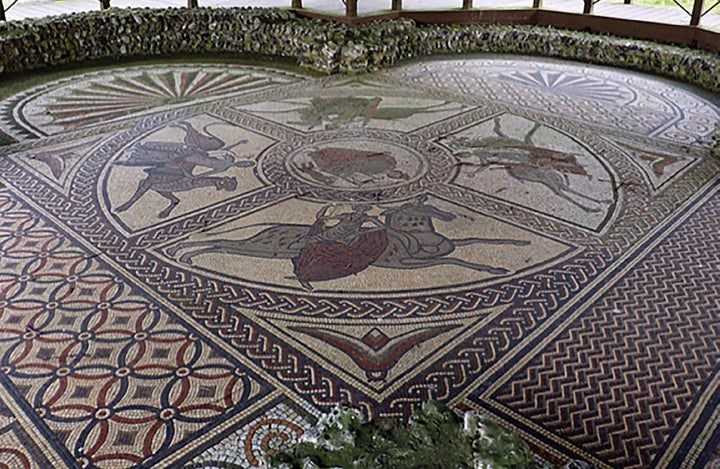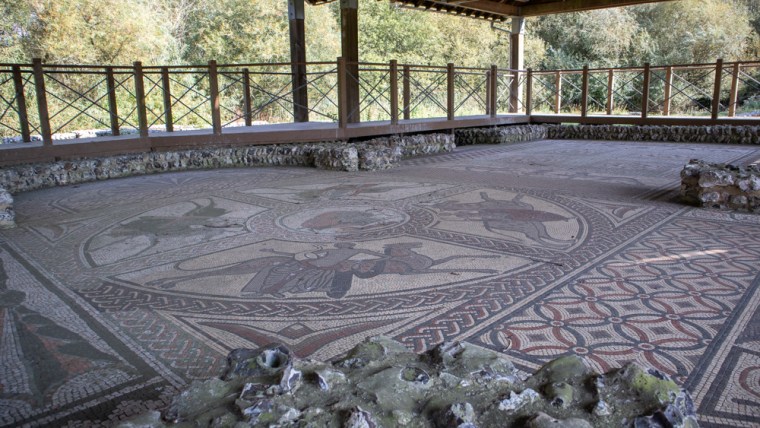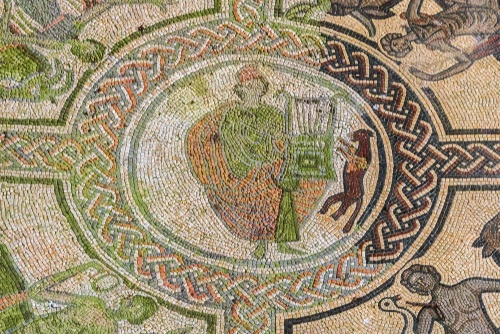The Littlecote Roman Villa, nestled near Hungerford, Berkshire, is one of the most fascinating archaeological sites in Britain. Discovered in the early 18th century, this vast villa complex has revealed a wealth of information about Roman life in Britain, particularly for the wealthy landowners of the time. Among its most stunning features is the Orpheus mosaic, a masterpiece of Roman art that continues to captivate historians and visitors alike.
Table of Contents
ToggleDiscovery and Rediscovery of Littlecote Roman Villa
The history of Littlecote Roman Villa dates back to its accidental discovery in 1727 by a local landowner who was digging postholes. During his excavation, he unearthed a beautiful mosaic floor, but rather than explore the find further, the landowner reburied it, leaving its secrets hidden for nearly two and a half centuries. It wasn’t until 1976 that archaeologists rediscovered the villa, conducting a full excavation and revealing the vast scope of this Roman site.
An Architectural Marvel: Over 60 Rooms and Lavish Amenities
Littlecote Roman Villa is an architectural marvel, encompassing over 60 rooms, many of which had hypocaust heating—an advanced system of underfloor heating used in Roman times. This feature not only highlights the wealth and technological sophistication of the villa’s inhabitants but also demonstrates how Roman architecture adapted to the colder climate of Britain.
In addition to the hypocaust system, the villa boasted two thermae (Roman baths), further emphasizing the luxurious lifestyle of its occupants. These baths were a significant part of Roman social life, indicating that the villa served not just as a private residence but also as a place for entertainment and gatherings.
The Orpheus Mosaic: A Roman Masterpiece
The villa’s most renowned feature is the Orpheus mosaic, one of the finest examples of Roman mosaic craftsmanship found in Britannia. The mosaic, which was fully uncovered and restored in 1976, depicts the mythical figure Orpheus, who, according to legend, could charm animals with his music. The scene is vibrantly detailed, showing Orpheus surrounded by a variety of animals in a complex, colorful pattern.

The artistic skill involved in creating such a mosaic speaks to the level of cultural sophistication in Roman Britain. It is thought that this room, adorned with the mosaic, was used for hosting lavish gatherings and feasts, showcasing the villa owner’s wealth and cultural ties to the broader Roman Empire.
A Working Estate: Workshops and Agriculture
While the villa’s residential sections were undoubtedly luxurious, Littlecote was also a working estate. Archaeologists have uncovered several detached workshops and barns, suggesting that agricultural production played a central role in the villa’s function. Tools, pottery, and coins found at the site hint at an active economic life, with the villa serving as both a home and a center of commerce.

The combination of luxury and productivity reflects the dual nature of Roman villas, which were both elite residences and hubs of rural economic life. The presence of barns and workshops shows that the villa was likely self-sufficient, producing its own food and goods, while also contributing to the local economy.
The Historical Significance of Littlecote Roman Villa
The discovery of Littlecote Roman Villa provides invaluable insights into the life of Romano-British elites. It exemplifies how Roman culture and technology blended with local traditions, leaving a lasting impact on the landscape and history of Britain.

The villa’s size, complexity, and artistic achievements, such as the Orpheus mosaic, underscore the importance of this site in understanding Roman Britain. It stands as a testament to the wealth, influence, and artistic accomplishments of the Roman period, offering a tangible link to a distant past.
Conclusion: A Window into Roman Britain’s Golden Era
The Littlecote Roman Villa is not only a relic of architectural and artistic genius but also a living record of the luxury, culture, and daily life of Britain under Roman rule. The careful design, advanced amenities, and the breathtaking Orpheus mosaic combine to make this villa one of the most significant archaeological finds in Britain. The ongoing study of this site continues to reveal more about the grandeur of the Roman elite and their lasting legacy in the British Isles.


